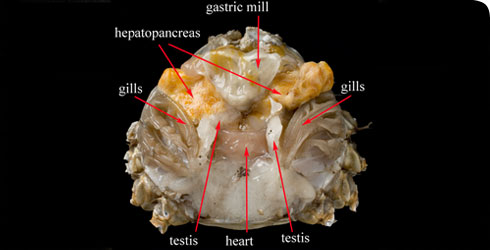Management
Mitten crabs are a contentious invasive species. They have high reproductive rates and few natural predators capable of reducing their numbers dramatically.
If alien populations are not controlled, they will continue to threaten native ecosystems, damage unprotected river banks and spread even further. Increased larval densities in estuaries will increase the risk of dispersal into new watersheds via the ballast water of shipping vessels. Therefore it is important to manage existing populations.
How could crab numbers be reduced?
Since mitten crabs are eaten in southeast Asia, commercial exploitation could potentially be used as a method of reducing crab numbers.
Zoologists at the Natural History Museum have been involved in assessing whether this would be viable for the mitten crab population in the River Thames. The results of the recent study, published in 2009, concluded that the crabs are fit for human consumption and the population is large enough to be exploited.
What's the next step?
The decision of whether to start a Thames mitten crab fishery now rests with governmental organisations such as DEFRA, the Environment Agency and the London Port Health Authority. A joint meeting of the Natural History Museum and the Linnean Society of London, supported by the London Port Health Authority, is being held on 11 March 2010 to discuss the pros and cons of such a fishery.
